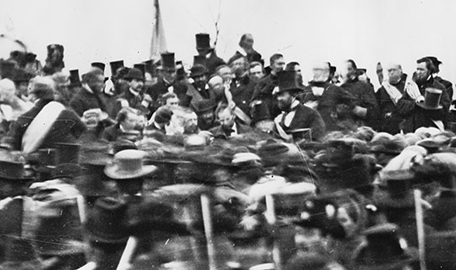Article in Brief: Narratives and stories are related, but interchangeable things. It’s important you know the difference. This article teaches you how to strategically use both story and narrative for maximum impact.
Back in the 1980s, Georgia author and humorist, Lewis Grizzard, used to joke that there was a distinction between “naked” and “nekkid.”
“Naked,” he would say, “means you ain’t got no clothes on. Nekkid means you ain’t got no clothes on and you’re up to something.”
The same is true of narratives and stories. They’re related, but not the same thing.
A story is a structured narrative. It has a beginning, middle and end. It typically contains other ingredients too, like characters and a plot.
With the exception of experiencing it emotionally, we cannot physically participate in a story as it is told. We play a passive role as listeners/observers.

A narrative, on the other hand, is a sequence of events. It has no standard form or structure. No distinct beginning or end.
Yet we can play an active role in it — participate in it.
Jack Kerouac’s On the Road is a story. So is the documentary, Stories We Tell.
Martin Luther King Jr.’s “I Have a Dream” speech was a narrative. As was Lincoln’s Gettysburg Address. And Apple’s Think Different campaign.
All stories are narratives, but not all narratives are stories.
If I’m you, and I’ve made it this far, the question I would be asking is this: So when it comes to my career, cause or company, should I be focusing on my narrative or storytelling?
The answer is both, because each does a specific job. And when strategically paired, they inspire and connect with others in ways sales and marketing can never achieve.
Dr. King’s narrative was simple and powerful — that all men are created equal. It is the same narrative Lincoln shared. The same narrative authored by Thomas Jefferson in the United State’s Declaration of Independence. A narrative that Jefferson may have borrowed from Philip Mazzei, an Italian physician and friend.
Have you ever heard the story of Dr. King’s monumental speech? When you experience the stories surrounding that historic event, it adds to the power of his narrative. It brings it to life — makes it human and accessible.
That’s the power of a core narrative supported by storytelling.
The story must serve the narrative, not the other way around.
A story that’s not connected to a broader narrative is mere entertainment. And a narrative without a story is mere information. Narratives need stories to inject them with context, emotion and meaning.
Let me tell you a quick story to shed light on this idea.
I recently learned about a fundraising experiment conducted by the global aid agency, Mercy Corps, in 2007.
Mercy Corps’ core narrative is “saving and improving lives in the world’s toughest places.”
Two fundraising campaigns were tested. One campaign took the traditional approach of sharing the work the organization was doing throughout the world. How they had grown over the years through contributions. And how the money was spent. (All of this is part of Mercy Corps’ narrative.)
Then it called for action — a donation.

The second campaign told the story of Giselle, a 12-year-old girl forced to flee her home in the Eastern Congo, when fighting broke out.
That campaign revealed that Giselle was one of 1.2 million affected people in need of food, shelter and healthcare. And $50 would feed her as well as 140 other refugees for 10 days.
It’s no surprise, Giselle’s story was 22 times more effective in generating donations. Why? It brought to life Mercy Corps’ narrative of “saving and improving lives.”
You need a powerful narrative. Your organization or cause needs a powerful narrative.
But you — and they — need meaningful stories, as well.
Narrative and storytelling are distinct, but related, practices. And when combined, they are influential forces that forge emotional connections with those you serve.
Are the stories you’re telling aligned with your core narrative?
Maybe it’s time they are.
(You may also be interested in Are You Building a Story or Narrative?)
 Keith Reynold Jennings is a marketing executive and writer focused on the intersections of servant leadership and modern marketing. Connect through Linkedin, Twitter, Facebook or email him directly.
Keith Reynold Jennings is a marketing executive and writer focused on the intersections of servant leadership and modern marketing. Connect through Linkedin, Twitter, Facebook or email him directly.